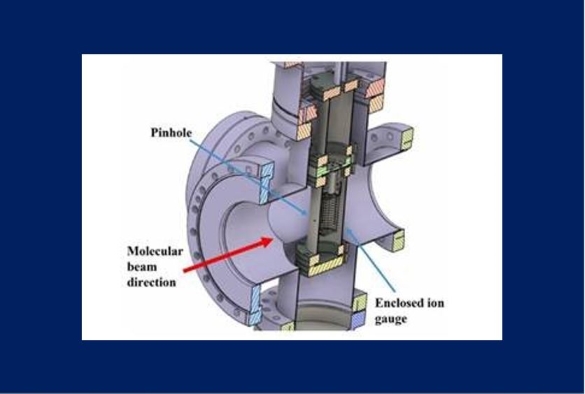Characterization of Molecular beams

Non-invasive beam profile monitors are highly desirable for modern accelerators. They can provide comprehensive information about the particle beam, such as beam sizes and emittances, without stopping the operation. This would be ideal for many applications, including high intensity and high energy applications, such as the Large Hardon Collider (LHC) and the European Spallation Source (ESS), and proton therapy accelerators, where a beam profile monitor based on a supersonic molecular curtain would guarantee a safe and smooth operation.
The advantages of such a method include minimum disturbance, two-dimensional measurement and versatility. The principle of such a monitor can be seen in the image above.
Different sets of nozzle and skimmers are used to generate molecular curtains of different sizes and number densities to tailor to the need of a particular accelerator, vacuum environment and measurement time. Such modifications need to be characterized before their application.
An open-access paper has just been published in Vacuum in which researchers from our QUASAR Group developed a compression gauge method to characterize a molecular gas curtain. This method uses a hot ion gauge enclosed in a small chamber but with a pinhole opening for accepting the molecular beam for absolute number density measurement as seen in the above schematic drawing. By mechanically scanning the pinhole, the distribution can be measured.
Previously, laser interferometry techniques, Rayleigh scattering, a common microphone or pressure transducer, multi-photon ionization, and nuclear scattering were used to determine the molecular flow in the number density range of 1020 – 1022 m-3 or higher, but these all suffer from the signal-to-noise ratio in case the number density is much lower. This new research fills this gap and can measure molecular beams in the range between 1014 – 1017 m-3 . This not only paves the way for further improvement of beam profile monitors but can also be applied in other fields such as nuclear physics, nuclear astrophysics and atomic physics where similar supersonic gas jets and molecular beam sources are widely used.